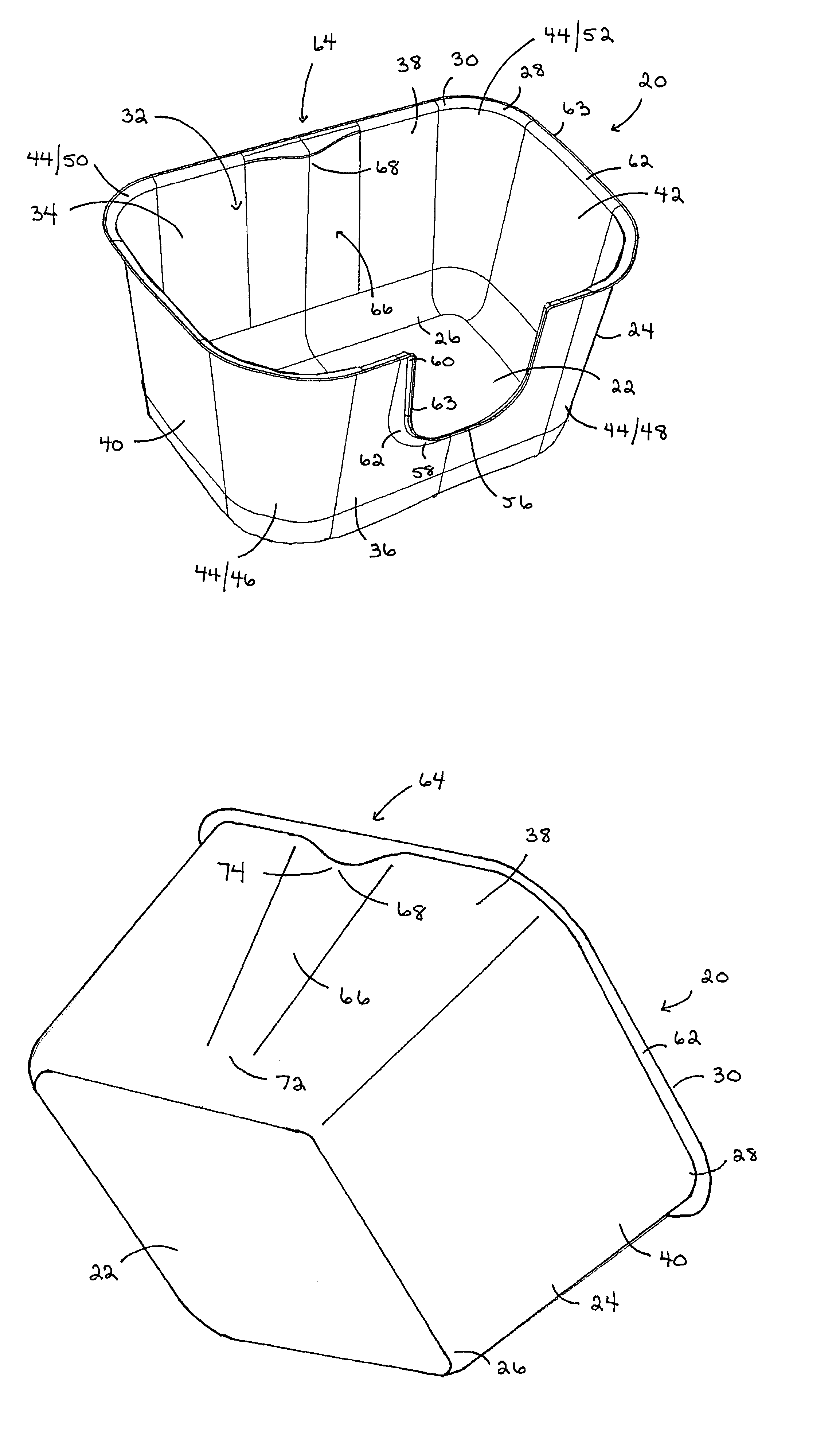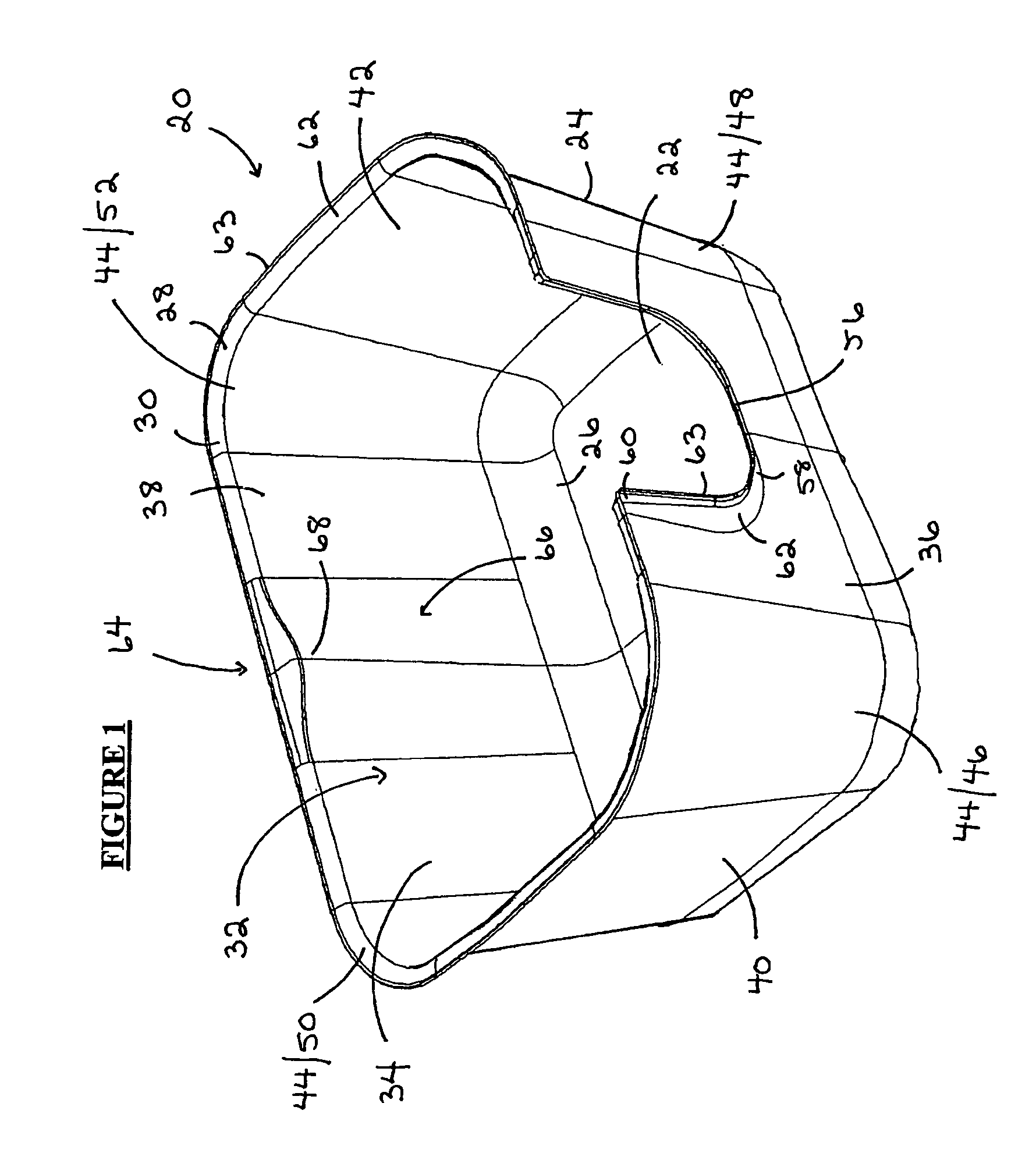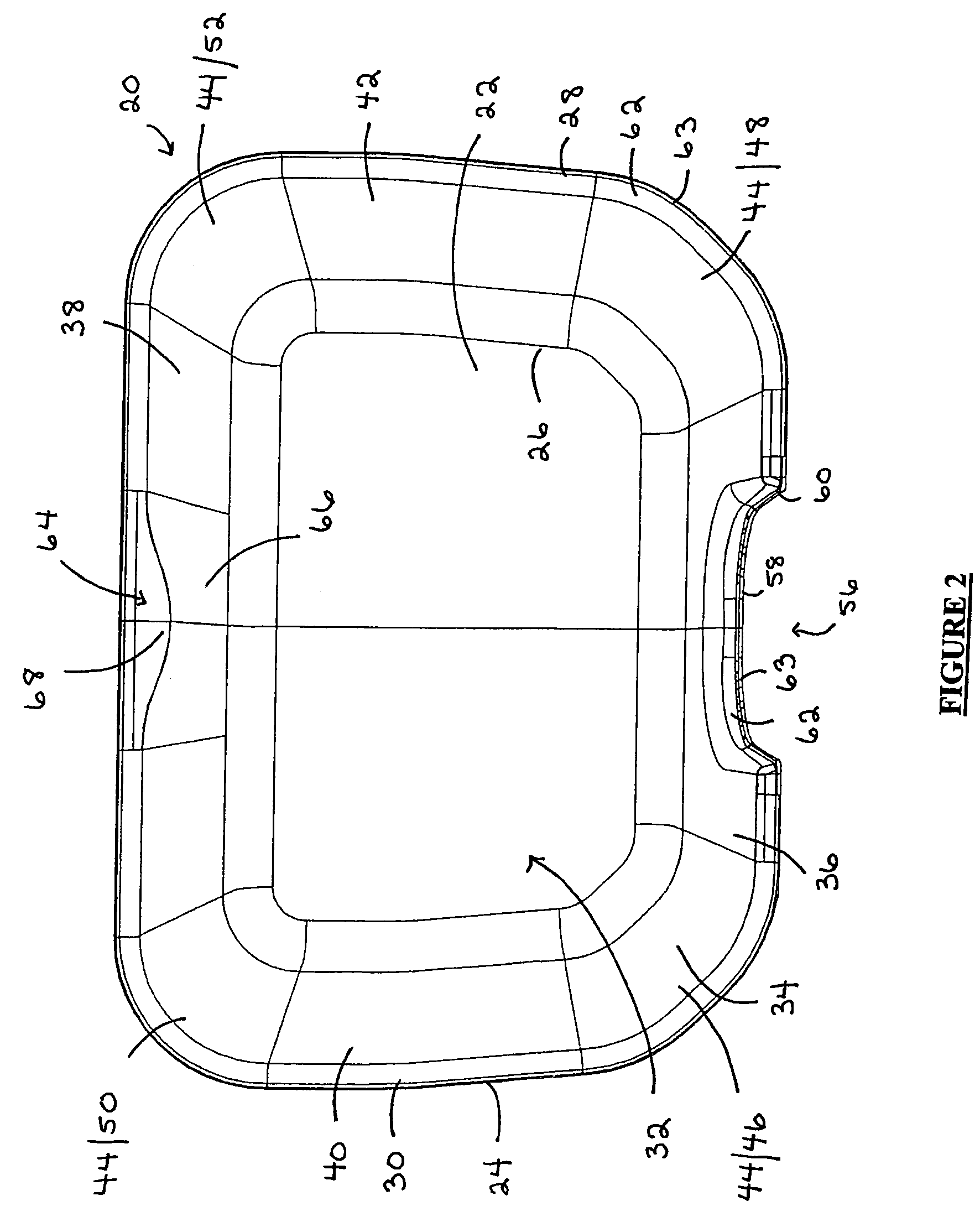Animal litter box
a litter box and animal technology, applied in the field of animal litter boxes, can solve the problems of difficult maintenance of cleanliness and hygiene outside, leakage of litter boxes, and the inability to fully satisfy the requirements of litter box covers, and achieve the effect of effectively containing litter and urine and facilitating ingress
- Summary
- Abstract
- Description
- Claims
- Application Information
AI Technical Summary
Benefits of technology
Problems solved by technology
Method used
Image
Examples
Embodiment Construction
[0057]The present invention relates to an animal litter box which is configured to urge an animal toward a desired orientation in the litter box.
[0058]Referring to FIGS. 1–5, a preferred embodiment of the litter box (20) includes a floor (22) and a sidewall (24). The litter box (20) may optionally include a litter box cover (not shown).
[0059]In the preferred embodiment the litter box (20) is sized and designed for use with cats, but the litter box may be used or adapted for use with other animals.
[0060]The sidewall (24) extends upward from the floor (22). The sidewall (24) has a lower end (26) which is connected with the floor (22) and has an upper end (28) which defines an upper end (30) of the litter box (20). The sidewall (24) surrounds an interior (32) of the litter box (20) and has an interior sidewall surface (34) which faces the interior (32) of the litter box (20).
[0061]The sidewall (24) preferably has a height which is relatively high in comparison with some conventional li...
PUM
 Login to View More
Login to View More Abstract
Description
Claims
Application Information
 Login to View More
Login to View More - R&D
- Intellectual Property
- Life Sciences
- Materials
- Tech Scout
- Unparalleled Data Quality
- Higher Quality Content
- 60% Fewer Hallucinations
Browse by: Latest US Patents, China's latest patents, Technical Efficacy Thesaurus, Application Domain, Technology Topic, Popular Technical Reports.
© 2025 PatSnap. All rights reserved.Legal|Privacy policy|Modern Slavery Act Transparency Statement|Sitemap|About US| Contact US: help@patsnap.com



